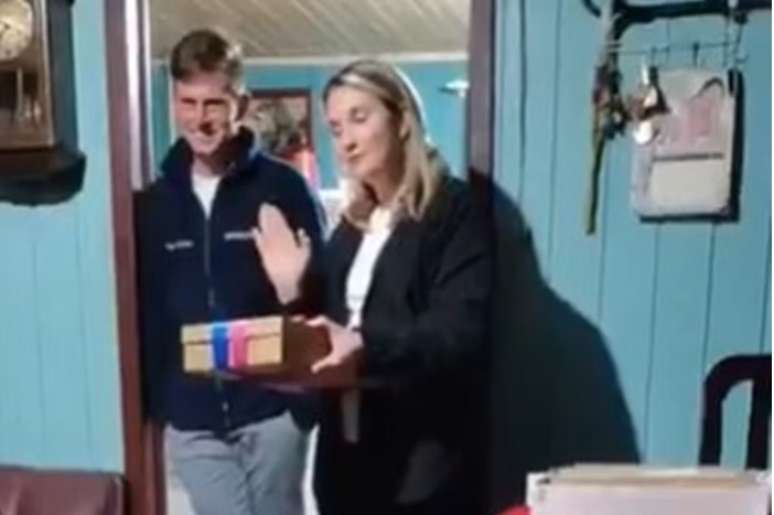The use of deepfakes node Telegram is growing at an alarming rate, fueled by advances in artificial intelligence that allow the creation of explicit, non-consensual images with frightening ease. What started as an initial concern in 2020, when the specialist Henry Ajder Discovered an AI bot that “undresses” women in photos has turned into a global threat that affects millions of people, especially women and girls.
The Alarm About the Rise of Deepfake Bots
According to a recent investigation by WIREDat least 50 bots in Telegram are active in creating explicit images using AI. These bots allow anyone, with just a few clicks, to create deepfakes of people without their consent, removing clothing or placing them in explicit situations. The danger is clear: these tools have the potential to ruin lives, and their ease of use puts a growing number of people at risk of online abuse.
Millions of Active Users on Explicit Bots
The numbers are staggering: the 50 bots reviewed by WIRED they have more than 4 million monthly active users. Two of the bots have more than 400,000 users each, and another 14 have more than 100,000 users. This indicates that the use of deepfakes explicit is quickly becoming a widespread practice, and the Telegram is the main facilitator of this dissemination.
Devastating Implications for Victims of Deepfakes
The psychological and emotional consequences of having a personal image transformed into explicit content are devastating. Second Ajdergirls and women are being disproportionately affected, suffering from the trauma, shame and fear caused by these creations. The unbridled growth of deepfakes explains the inability of platforms like Telegram to adequately control this threat.
The Unstoppable Growth of Intimate Image Abuse
Since the non-consensual intimate images (NCII) began to appear in late 2017, the creation and sharing of deepfakes exploded, driven by advances in artificial intelligence. “Nudification” sites and bots Telegram are used to target women in all parts of the world, from political leaders to high school students. The normalization of this abuse is alarming, and the problem continues to grow with no signs of stopping.
The Secret Bot Network on Telegram
The bots deepfake are supported by a network of channels in the Telegram who have over 3 million subscribers combined. These channels are used to share updates about new features and “token” promotions that enable the use of bots. This shows that the Telegram is not just a passive enabler, but the center of a dangerous network of abuse that continues to operate almost unhindered.
Telegram Takes Insufficient Measures
When the WIRED notified the Telegram regarding the existence of these bots, the platform removed 75 bots and channels. However, this action is far from solving the problem. Shortly afterwards, new bots appeared to replace those that had been removed, showing that the measure is a drop in the bucket in the midst of a much larger and more complex problem.
Deepfake Bots Operate in the Shadows
Many bots deepfake node Telegram they operate under seemingly harmless disguises. They do not display explicit content on their names or homepages, but once the user interacts with them, explicit options appear. This ability to hide their true nature makes these bots even more dangerous, as they go unnoticed by both victims and authorities.
The Monetization of Abuse
The bot creators of deepfake are profiting from the dissemination of this abusive content. Most bots require users to purchase “tokens” to generate the images, turning online abuse into a profitable industry. The demand for these tools is so high that even Russian cybercriminals created fake “nudity” websites to infect users with malware, revealing just how far this shadowy market has gone.
Deepfake Technology Increasingly Threatening
The first bots deepfake They were rudimentary, but the technology has become increasingly sophisticated. Bots can now create highly realistic images with ease, and many operate without arousing suspicion. The quality of AI-generated images is so convincing that it becomes virtually impossible to differentiate fake from real, which amplifies the potential for harm.
An Easily Accessible Tool for Abuse
The combination of search, bot hosting and content sharing on Telegram creates a perfect environment for abuse of deepfakes. The platform allows anyone to find and use these tools with ease, exposing millions of people to this type of digital breach. THE Telegram has become the epicenter of a global problem that seems impossible to contain.
The Inaction of Big Technology Companies
Big tech companies, while aware of the problem, have been slow to act. Although some policies against deepfakes non-consensual have been implemented by giants such as Google and Applethese measures are far from being effective. Applications that create deepfakes They can still be found in app stores, and the content generated continues to spread across multiple platforms.
Laws Cannot Keep Up with the Rapid Growth of Deepfakes
In the United States, 23 states have passed laws to deal with deepfakes non-consensual, but the application of these laws is still in its infancy. Meanwhile, platforms like Telegram continue to be used to disseminate this content, and victims have few options to seek justice or redress.
Telegram Under Pressure, but Slow to Act
THE Telegram has been criticized for its slow and, in many cases, insufficient approach to dealing with harmful content. The platform, which has hosted scammers and extremists, is now facing increasing pressure to combat the abuse of deepfakes. The recent arrest of its founder, Pavel Durovbrought some changes, but the victims of deepfakes are still left helpless.
Inefficient Monitoring and Moderation
To Henry Ajderthe Telegram is particularly problematic in the case of deepfakes due to the ease with which it allows the creation and sharing of this content. The platform offers the perfect tools for abusers to use artificial intelligence in a destructive way, all in a space that is difficult to monitor.
The Vicious Circle of Deepfake Bots
Even when bots deepfake are removed, new bots quickly emerge to take their place. This constant cycle of removal and reappearance makes any attempt to effectively control the problem difficult. The inability to contain this threat reveals a structural flaw in the security measures of digital platforms.
The Responsibility Should Be on the Platforms
To Elena Michaelco-founder of the campaign #NotYourPornthe Telegram should be more proactive in moderating their content. She says platforms need to be held accountable for creating safe environments and that the burden of monitoring abuse should not fall on victims themselves. Unfortunately, companies still seem reactive rather than preventive in the fight against data abuse. deepfakes.
Conclusion: A Crisis Out of Control
You deepfakes Explicitly abusive messages are becoming a widespread problem, and the lack of strong action by platforms like Telegram and lawmakers are allowing this crisis to widen. While technology artificial intelligence continue to evolve without adequate regulation, online abuse, facilitated by tools such as deepfake botswill continue to spread and destroy lives.
Summary for those in a hurry
- The use of deepfakes abusive in Telegram is growing out of control, with more than 50 bots active in creating explicit images.
- These bots have over 4 million monthly users, exposing millions of people to serious abuse.
- THE Telegram removed some bots, but new ones emerge quickly, perpetuating the cycle of abuse.
- The use of artificial intelligence to create deepfakes is becoming increasingly sophisticated and dangerous.
- Big tech companies and lawmakers are slowly reacting to this growing problem.
- Victims of deepfakes face devastating consequences as platforms fail to act proactively.
Source: Atrevida
Earl Johnson is a music writer at Gossipify, known for his in-depth analysis and unique perspective on the industry. A graduate of USC with a degree in Music, he brings years of experience and passion to his writing. He covers the latest releases and trends, always on the lookout for the next big thing in music.








